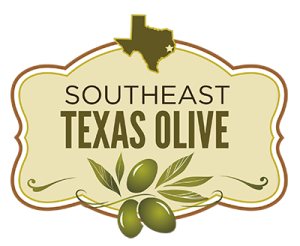By David Taylor
https://www.chron.com/neighborhood/dayton/news/article/Devers-orchard-saves-harvest-just-before-olive-14461683.php
“It has its good days and trying days. This is a trying day,” Brazil said standing in almost two feet of water in front of his house.
It could have been enough to throw up their hands, except Mother Nature didn’t rob them of their harvest this year.
“We finished late Friday night and early Saturday morning before the storm hit this week,” he said with relief in his voice.
For the second time in two years, the Brazil family has endured flooding in their home and the olive orchard they have built over the last few years with their friend Gino Venitucci.
It was close, but they finished their harvest on Saturday morning around 3:30 just a few days before Imelda’s torrential rain hit them hard.
The harvest
It wasn’t a great year, only a mediocre harvest, according to Brazil. The ravages of Harvey and losing that crop also affected last year’s non-event—no fruit. For two years straight, they have had to live off the 2016 crop for sales. This year they were able to harvest 17 acres with a yield of about 600-pounds per acre.
“It’s not what we’re used to, but it was nice to get a harvest since Hurricane Harvey really hit us hard,” he said.
Their miller was impressed by the oil and the amount of yield.
“We did have a good yield from the olives we harvested,” he said.
To make their highly sought-after virgin oil, they contract Texana Harvesting, from Cotulla, Texas near Laredo who has their own 200-acre olive ranch. They bring in their Oxbo harvester and to collect the olives and then Brazil uses Texas Mobile Mill, a mobile olive milling machine, to crush the olives and make the olive oil.
Their Alfa Laval mill is capable of crushing two tons of olives per hour.
“We contract them to do our harvesting and milling with our small farm and it saves on overhead,” he said.
“They’re always impressed with the look of the orchard, the grooming and the amount,” he said.
The season was slow this year because when the olives flowered earlier in the year, they suffered another tremendous rain.
“Olive trees don’t like their feet wet and when they stay wet like what we had in the first quarter of the year, the trees tend to stress and shed their fruit,” Brazil said.
“We’re fortunate to get what we got. It should help us keep the local people, and stores that we currently supply, good for another year and we’re happy for that.”
The process
Most of the harvesting is done in the evening, not during the daylight hours.
“We started around 5 p.m. on Friday and weren’t done until around 3:30 a.m.,” he said.
It’s better for the olive fruit because with Texas heat, the temperature can drop by at least 10-15 degrees in the evening and it makes the process of milling much easier.
“We were dropping more cold water and ice in the cleaning bath to drop the temperature even more,” he said. “They’ll release more oil when they’re (the olives) are more comfortable.”
The harvester towers over the trees and literally wraps itself around the tree moving slowly at barely 4 mph. Inside the harvester has a three-fan cleaning system that removes leaves and debris from the crop stream. The cab of the harvester sits over the picking tunnel giving the operator a clear view of the canopy and the tree. The tree is shaken and the fruit falls into a nylon catcher system and there is minimal trunk impact.
The mill is about the size of an 18-wheeler and parks on the property at a convenient spot for unloading the fruit into the mill.
The trees are grown in straight rows, like a hedge, and Brazil said they try to keep them to 12-feet tall.
“We don’t want them too tall because the harvester has to go over them,” he said.
Once they have filled one hopper, the olives are transported just yards away to the mill.
“They’ll go through a wash, and then a malaxer that takes about 45 minutes,” he said. A malaxer, he said, in East Texas terms, is like a big ole mixin’ tank.
“It mashes and grinds and the more you do that the more the oil begins to come out.”
Following that, it goes through a centrifuge which separates the mash from the oil and water. Then the liquid goes into a polishing centrifuge where the oil and water are separated.
“The oil goes into the drum and the water goes out onto the ground.”
Once the oil is sealed in a stainless-steel drum, it goes through a racking process for a natural filtration. During those 45-50 days, Brazil said gravity causes the particulates to separate out with the oil during milling to sink to the bottom of the tank. Eventually the sediment is removed preventing the oil from going bad and having a rancid taste.
“We sell it to a lady who makes soap with it,” he said. Nothing is left from the olives.
At the end of the milling process they yielded approximately 350 gallons of olive oil.
“We would have liked to have more, but this will get us through the year,” Brazil said.
The oil will be bottled and ready around October.
With no harvest the last two years it hasn’t been easy.
“It’s hard when you’re trying to keep a business going,” he said.
They make straight virgin olive oil of the highest quality and sell it locally to HEB in Mont Belvieu and Spec’s Fine Food Stores.
The history
Growing an olive orchard wasn’t in the plans when the Brazil’s bought their land in Devers some 15 years ago.
“We came here to do a cow/calf operation and then Gino got me interested in the olive business,” he said.
The land neighbors became friends when Brazil shared his knowledge of farm equipment with Gino Venitucci, an Italian petroleum engineer who retired in Devers to grow an orchard.
Brazil spent time learning the business with Gino who eventually offered the business to Brazil and their partners, the Devilliers.
Now they have around 34,000 Koroneiki and Arbequina olive trees in the orchard spread over 50 acres. Brazil said they have a total of 120 acres so there’s room for growth.
Approximately 90 percent of the trees are Arbequina olives and the rest are Koroneiki. The Arbequina olives produce a smooth buttery taste while the Koroneiki give the oil a more pungent flavor. Together, the blended oil produces the smooth, fresh flavor of Southeast Texas Olive Oil.
“When it was harvest day, we had friends and family over and it was a fun day for us all,” he said. They also hosted the Liberty County Master Gardener’s group who waited into the wee hours to see some of the first oil come out. The first drop came around 1 a.m.
Even though they’ve been dealt another blow with the Imelda flood, Brazil and his wife Monica have hopes that Mother Nature will be good to them this year.
“If this can dry out and we don’t have a major freeze, we should be okay,” he said.





